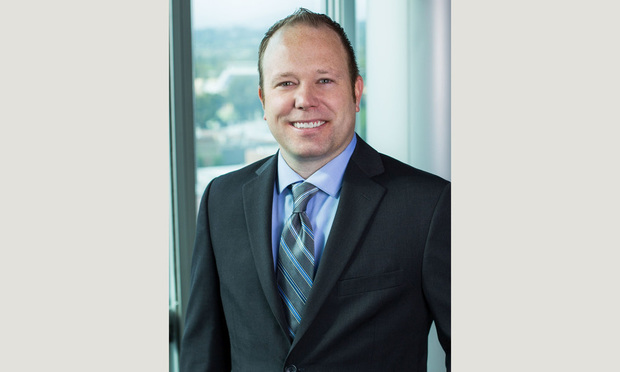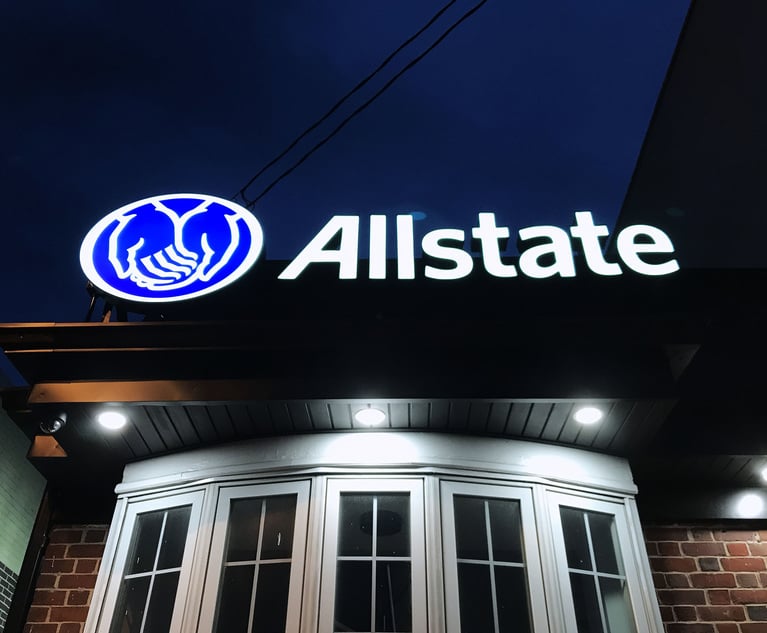The USPTO Addresses the Wonderland of Strained Analogies
The U.S. Patent and Trademark Office, on Jan. 7, issued new examination guidelines to address the often-criticized unpredictability with determining patent-eligibility of abstract ideas after the U.S. Supreme Court's decision in Alice v. CLS Bank (2014).
January 14, 2019 at 05:15 PM
6 minute read
 Michael P. Shepherd, principal at Fish & Richardson.
Michael P. Shepherd, principal at Fish & Richardson.
The U.S. Patent and Trademark Office, on Jan. 7, issued new examination guidelines to address the often-criticized unpredictability with determining patent-eligibility of abstract ideas after the U.S. Supreme Court's decision in Alice v. CLS Bank (2014).
The unpredictability arises, in part, because whether a claim is considered to be directed to an abstract idea (Alice step 1) is controlled by precedent rather than by any definition of what an abstract idea is. Therefore, demonstrating patent-eligibility has invariably required making strained analogies to previously decided cases, even when the technologies involved are not at all similar.
For example, software applications almost always attempt to analogize to a first case that related to an improved structure of a database table (Enfish), while attempting to distance themselves from a second case that related to monitoring an electric power grid (Electric Power). This regime leads to a smattering of bewildering analogies. In just the past few months, applicants in ex parte appeals have analogized the following technologies to Enfish, even though none have anything to do with database tables:
- Issuing employee compensation
- Detecting signal patterns
- Image capturing, trading securities
- Selecting auction parameters
- Controlling access to digital data
- Computing navigation attitude
- Creating social networks
In contrast, applicants have attempted to draw distinctions with Electric Power for the following technologies, none of which have anything to do with monitoring an electric power grid:
- Online trading
- Collaborative learning systems
- Analyzing market data
- Online appointment scheduling
- Sharing profile images
- Processing radiotherapy images
Federal Circuit Court of Appeals Judge S. Jay Plager wrote a separate opinion recently to describe the unpredictability that arises when “abstract ideas” are defined only by previous examples:
“The 'abstract ideas' idea, when used for denying a claimed invention's patent eligibility either before or after a patent is issued, cannot thus function as a valid rule of law. As a fundamental policy, a legal term such as 'abstract ideas,' if the exclusionary standards of Section 101 are to function as a valid rule of law, must provide concise guidance for the future. In that sense, a rule of law is a prediction of how courts will decide future cases. 'Abstract ideas,' like the term 'obscenity,' may provide a cultural consensus in a given instance regarding whether a past event qualifies, but it fails to provide the kind of specificity and clarity that makes it useful for future prediction of outcome,” Interval Licensing v. AOL, J. Plager concurring-in-part and dissenting-in-part, slip op. p. 6 (Fed. Cir. 2018)
The new USPTO guidelines seek to improve the predictability of determining whether claims are directed to abstract ideas during examination. Importantly, these changes strictly increase the pool of inventions that will be considered patent-eligible by the USPTO, and may do so in substantial numbers.
The new guidelines modify the previous eligibility analysis by adding brighter line rules in two places of the eligibility analysis, both of which may be quite favorable for applicants.
First, the new guidelines eliminate the previous regime of strained analogies by simply enumerating three groupings of technologies that will be analyzed as potential abstract ideas: mathematical concepts, methods of organizing human activity, and mental processes. Notably, technologies that do not fall into these three categories will no longer be further analyzed and will presumably be patent-eligible.
This first change eliminates the exercise of strained analogies described above and will seemingly confer patent eligibility on many kinds of computer-related inventions that do not fall under these categories.
Second, the new guidelines introduce a second prong of analysis to be performed for technologies that do fall under one of the three enumerated groupings. In particular, the new guidelines ask examiners to evaluate whether the claims are “integrated into a practical application.” In other words, if the claim integrates an abstract idea into a practical application, then the claim is not “directed to” the abstract idea.
This second change introduces perhaps the most uncertainty, because although the “directed to” inquiry is well rooted in case law, the “practical application” standard is new and has, therefore, not been tested extensively in the courts or in the USPTO.
Claims that recite an enumerated abstract idea category and that fail to recite a practical application can, nevertheless, still be found patent-eligible. In particular, such a claim will then be evaluated under Alice step 2 to determine if the claim recites an inventive concept. This part of the eligibility analysis is largely unchanged but will be expected to be encountered less frequency.
A first observation about the new guidelines is that they strongly resurrect the preemption considerations that underpinned the Mayo and Alice decisions. Such preemption considerations had become dramatically less important in USPTO analysis after Ariosa v. Sequnom, in which the Federal Circuit stated, “While pre-emption may signal patent ineligible subject matter, the absence of complete preemption does not demonstrate patent eligibility.” As a result, preemption arguments at the USPTO were, thereafter, easily swatted away.
In contrast, a major theme of the new guidelines is in determining whether a claim has meaningful limits on a judicial exception such that it does not monopolize the judicial exception. The new guidelines, therefore, seek to increase predictability by framing the analysis with preemption as a major underlying theme.
A second observation is that because the new guidelines apply only to the USPTO examination procedure, they almost certainly will increase the number of patents that are found eligible by the USPTO but found ineligible in the courts. Therefore, practitioners are strongly encouraged to understand how a claim could be judged differently by a court, in which strained analogies to disparate technologies is still the prevailing exercise.
Michael P. Shepherd is a principal at Fish & Richardson and is based in the firm's Silicon Valley office. His practice emphasizes client counseling and patent prosecution in the areas of software and other computer-related technologies and he has significant experience counseling clients on obtaining patent protection for a variety of technically complex technologies.
This content has been archived. It is available through our partners, LexisNexis® and Bloomberg Law.
To view this content, please continue to their sites.
Not a Lexis Subscriber?
Subscribe Now
Not a Bloomberg Law Subscriber?
Subscribe Now
NOT FOR REPRINT
© 2025 ALM Global, LLC, All Rights Reserved. Request academic re-use from www.copyright.com. All other uses, submit a request to [email protected]. For more information visit Asset & Logo Licensing.
You Might Like
View All
Hawaii wildfire victims spared from testifying after last-minute deal over $4B settlement
4 minute read
State Appeals Court Revives BraunHagey Lawsuit Alleging $4.2M Unlawful Wire to China
3 minute read

Apple Disputes 'Efforts to Manufacture' Imaging Sensor Claims Against iPhone 15 Technology
Trending Stories
Who Got The Work
J. Brugh Lower of Gibbons has entered an appearance for industrial equipment supplier Devco Corporation in a pending trademark infringement lawsuit. The suit, accusing the defendant of selling knock-off Graco products, was filed Dec. 18 in New Jersey District Court by Rivkin Radler on behalf of Graco Inc. and Graco Minnesota. The case, assigned to U.S. District Judge Zahid N. Quraishi, is 3:24-cv-11294, Graco Inc. et al v. Devco Corporation.
Who Got The Work
Rebecca Maller-Stein and Kent A. Yalowitz of Arnold & Porter Kaye Scholer have entered their appearances for Hanaco Venture Capital and its executives, Lior Prosor and David Frankel, in a pending securities lawsuit. The action, filed on Dec. 24 in New York Southern District Court by Zell, Aron & Co. on behalf of Goldeneye Advisors, accuses the defendants of negligently and fraudulently managing the plaintiff's $1 million investment. The case, assigned to U.S. District Judge Vernon S. Broderick, is 1:24-cv-09918, Goldeneye Advisors, LLC v. Hanaco Venture Capital, Ltd. et al.
Who Got The Work
Attorneys from A&O Shearman has stepped in as defense counsel for Toronto-Dominion Bank and other defendants in a pending securities class action. The suit, filed Dec. 11 in New York Southern District Court by Bleichmar Fonti & Auld, accuses the defendants of concealing the bank's 'pervasive' deficiencies in regards to its compliance with the Bank Secrecy Act and the quality of its anti-money laundering controls. The case, assigned to U.S. District Judge Arun Subramanian, is 1:24-cv-09445, Gonzalez v. The Toronto-Dominion Bank et al.
Who Got The Work
Crown Castle International, a Pennsylvania company providing shared communications infrastructure, has turned to Luke D. Wolf of Gordon Rees Scully Mansukhani to fend off a pending breach-of-contract lawsuit. The court action, filed Nov. 25 in Michigan Eastern District Court by Hooper Hathaway PC on behalf of The Town Residences LLC, accuses Crown Castle of failing to transfer approximately $30,000 in utility payments from T-Mobile in breach of a roof-top lease and assignment agreement. The case, assigned to U.S. District Judge Susan K. Declercq, is 2:24-cv-13131, The Town Residences LLC v. T-Mobile US, Inc. et al.
Who Got The Work
Wilfred P. Coronato and Daniel M. Schwartz of McCarter & English have stepped in as defense counsel to Electrolux Home Products Inc. in a pending product liability lawsuit. The court action, filed Nov. 26 in New York Eastern District Court by Poulos Lopiccolo PC and Nagel Rice LLP on behalf of David Stern, alleges that the defendant's refrigerators’ drawers and shelving repeatedly break and fall apart within months after purchase. The case, assigned to U.S. District Judge Joan M. Azrack, is 2:24-cv-08204, Stern v. Electrolux Home Products, Inc.
Featured Firms
Law Offices of Gary Martin Hays & Associates, P.C.
(470) 294-1674
Law Offices of Mark E. Salomone
(857) 444-6468
Smith & Hassler
(713) 739-1250






